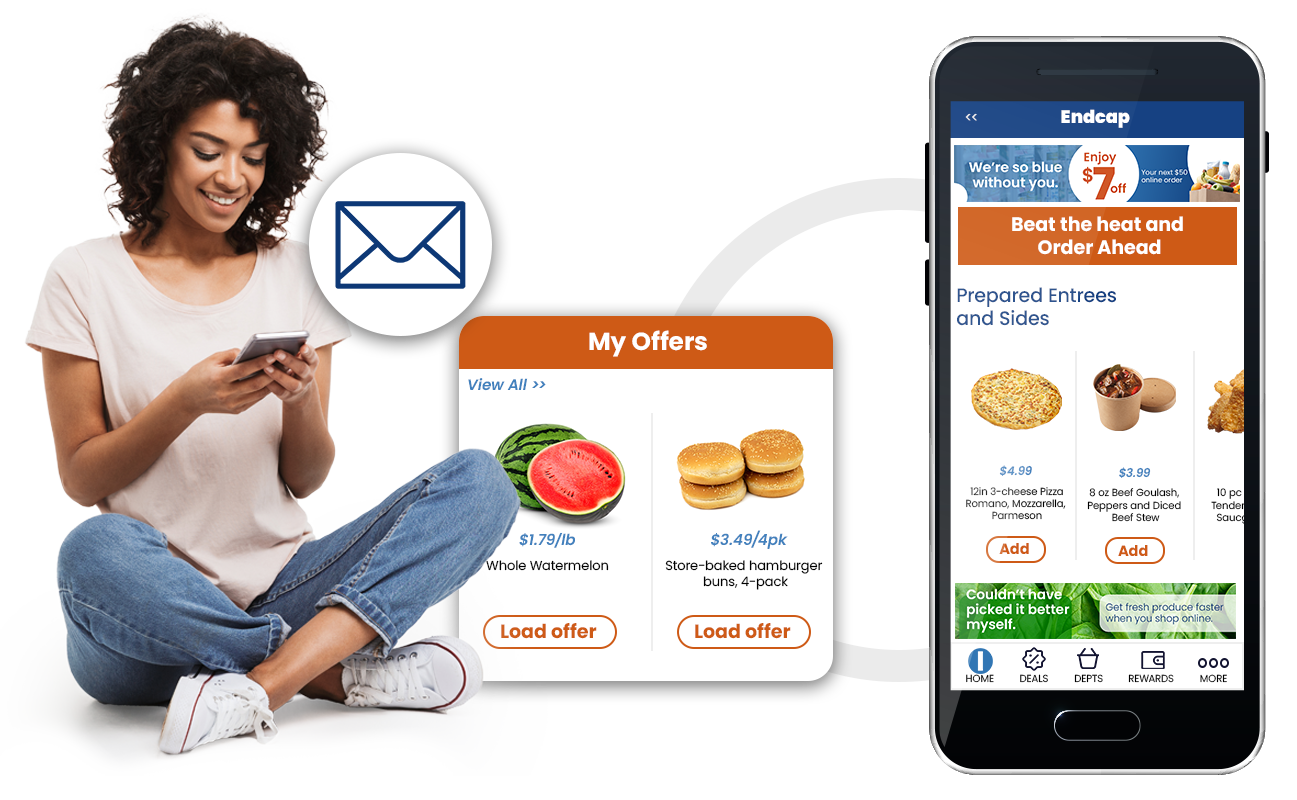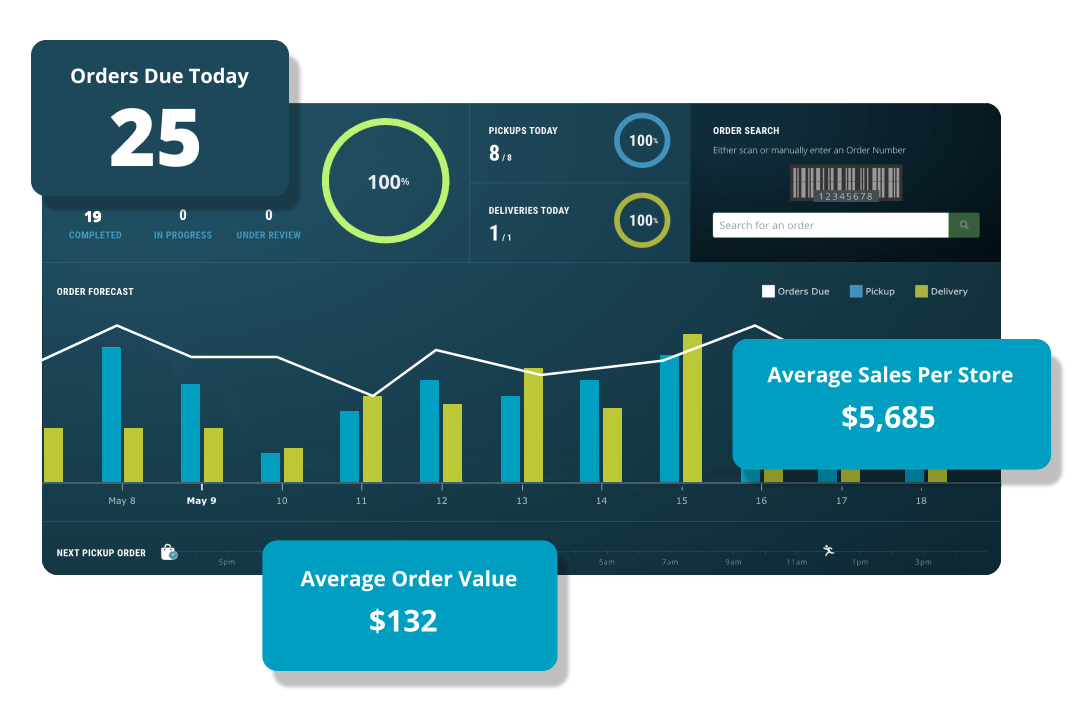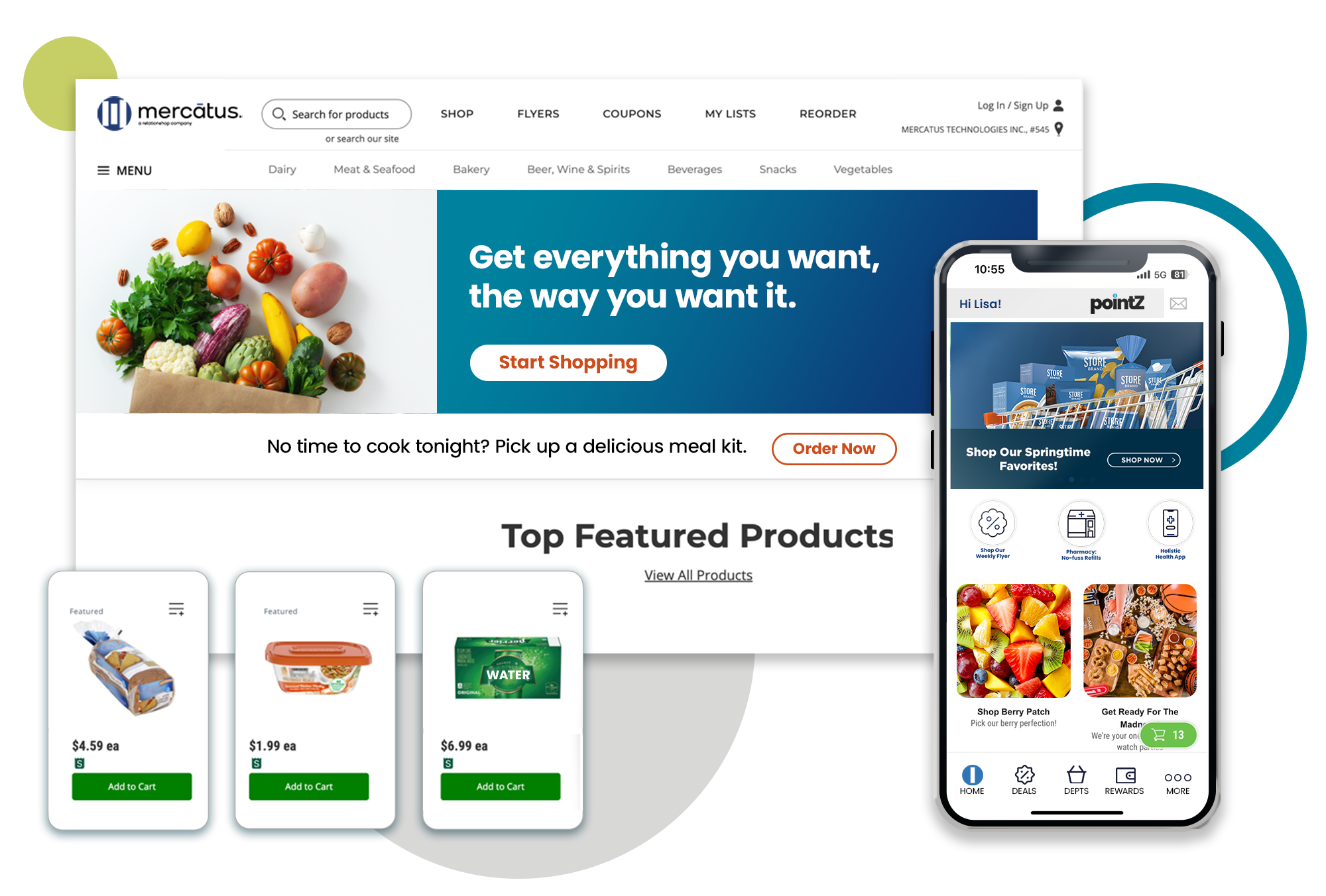A well-defined grocery strategy is essential for success in the competitive grocery retail industry, where customer expectations and market dynamics are constantly evolving.
A grocery retail strategy should include a comprehensive plan to address operational challenges, enhance customer satisfaction, and maintain profitability. In a market where trends shift rapidly, grocers must create a strategy that allows for adaptations to their approach when necessary to stay relevant and competitive.

The rise of grocery e-commerce has added complexity to the retail industry, creating both opportunities and challenges. From managing digital fulfillment to meeting demand for personalized shopping experiences, grocers face increasing pressure to innovate. A robust grocery strategy enables businesses to tackle these hurdles while driving growth and customer engagement.
Key areas of focus in a successful grocery strategy include developing customer loyalty, embracing digital transformation, and implementing effective omnichannel retailing. By leveraging data and technology, grocers can better understand consumer behavior, optimize pricing, and streamline operations to deliver seamless shopping experiences.
This article explores the critical components of a winning grocery strategy, offering actionable insights to help retailers thrive in a dynamic market. Whether through digital innovations or tailored customer experiences, the right strategies can position grocers for long-term success.
Key Components of a Grocery Retail Strategy
A successful grocery strategy requires a combination of data-driven insights, operational efficiency, and customer-centric approaches. Retailers must address market trends, optimize resources, and implement pricing models that cater to both profitability and consumer expectations.
A strong grocery strategy incorporates comprehensive market analysis, optimized inventory management, and effective pricing models. By focusing on these components, grocers can create a sustainable business model that adapts to market dynamics and meets customer expectations.
Below are the core components that define a winning grocery retail strategy.
Conducting a Comprehensive Market Analysis
Understanding the market is a fundamental step in developing a grocery strategy. Retailers must stay aligned with what their customers need in order to remain competitive. Here are some of the considerations to include in a market analysis:
- Market Trends: Identifying shifts in consumer preferences, such as increased demand for organic products or digital grocery services, ensures relevance in the marketplace.
- Consumer Behavior Insights: Using tools like surveys, loyalty program data, and social media analytics helps grocers understand what drives purchasing decisions.
- Competitor Analysis: Regularly monitoring competitors’ pricing, promotions, and offerings provides benchmarks for strategic adjustments.
Effective market analysis allows grocers to align their operations with customer needs and market conditions, ensuring they remain competitive and adaptive.
Inventory Optimization for Better Efficiency
Efficient inventory management is key for reducing operational costs while meeting customer demand. Inventory optimization minimizes waste, prevents stockouts, and ensures the availability of high-demand products.
- Automated Systems: Leveraging technology like RFID and AI-based tracking ensures real-time inventory updates and streamlines restocking processes.
- Predictive Analytics: Using historical data to forecast demand enables retailers to prepare for seasonal trends and avoid overstocking or understocking.
- Supplier Collaboration: Strong partnerships with suppliers ensure timely deliveries and improved stock consistency.
By adopting inventory optimization practices, grocers can balance supply and demand while maintaining operational efficiency.
Effective Pricing Strategies for Profitability
Pricing is a critical element of any grocery strategy, directly influencing revenue, customer satisfaction, and market positioning. Grocers must implement pricing strategies that balance competitiveness with profitability.
- Cost-Plus Pricing: A straightforward method where a fixed margin is added to the cost of goods, ensuring predictable profits.
- Promotional Pricing: Temporary discounts or bundle offers drive customer traffic and encourage higher basket sizes, particularly during peak shopping seasons.
- Dynamic Pricing: Adjusting prices in real-time based on demand, competition, and inventory helps grocers remain competitive while protecting margins.
Implementing these pricing strategies ensures grocers can offer value to customers while sustaining their bottom line. This approach not only drives profitability, but also ensures long-term relevance in the grocery retail industry.
Developing Customer Loyalty
Building and maintaining customer loyalty is one of the best ways to have long-term success in the competitive grocery retail industry. Grocers must go beyond pricing and product availability to create meaningful relationships with their customers.
By implementing loyalty programs and enhancing the in-store experience, retailers can encourage deeper connections, repeat purchases, and brand advocacy. These strategies ensure customers feel valued and engaged, strengthening their connection to the brand and encouraging long-term loyalty in a competitive market.

Implementing Successful Customer Loyalty Programs
Customer loyalty programs are a proven way to encourage repeat business and build lasting relationships with shoppers. These programs incentivize loyalty through rewards, personalized offers, and exclusive benefits that make customers feel valued.
- Enabling Repeat Purchases: Loyalty programs reward frequent shoppers with discounts, points, or cashback, ensuring they return to the same store for future purchases.
- Personalized Rewards: Using data from shopping habits, grocers can tailor rewards to individual preferences, such as discounts on favorite products or offers for special occasions.
Effective customer loyalty programs not only retain existing customers, but also attract new ones by showcasing the added value of shopping with the retailer.
Creating a Memorable In-Store Experience
A positive in-store experience remains a significant component of customer loyalty, even in the era of grocery e-commerce. By blending physical and digital elements, grocers can create an engaging and seamless shopping journey. Improving the in-store experience fosters stronger connections with customers, complementing online efforts and reinforcing loyalty. Here are some of the ways to create a great in-store experience:
- Layout Optimization: A well-organized store layout makes navigation easy and encourages impulse purchases. Strategic placement of high-demand and promotional items enhances the shopping experience.
- Immersive Shopping Experiences: Offering features like product sampling, interactive displays, or cooking demonstrations creates memorable in-store experiences that keep customers coming back.
- Integration of Digital Tools: Digital kiosks, personalized shopping apps, and real-time inventory updates enhance convenience, allowing shoppers to locate items quickly or access tailored recommendations.
By implementing tailored customer loyalty programs and focusing on creating memorable in-store experiences, grocers can establish a loyal customer base that drives consistent revenue.
Adopting Digital Transformation in Grocery Retail
The digital revolution has redefined how customers interact with grocers, making digital transformation an essential aspect of a successful grocery strategy. By adopting advanced technologies and integrating physical and digital experiences, retailers can meet evolving customer demands while staying competitive in the rapidly changing grocery retail industry.
Adopting digital transformation through grocery e-commerce and omnichannel retailing is a significant opportunity for grocers to stay relevant in the evolving grocery retail industry. By creating seamless online platforms and integrating physical and digital customer journeys, grocers can enhance engagement, drive loyalty, and ensure long-term success in an increasingly digital marketplace.
Transitioning to Grocery E-Commerce
The shift to grocery e-commerce is a fundamental step in meeting customer expectations for convenience and accessibility. A seamless online platform ensures that grocers remain relevant in the digital age while addressing the growing demand for online shopping.
- Seamless Online Ordering: A well-designed platform with intuitive navigation, search functionality, and personalized recommendations improves the customer experience and encourages repeat purchases.
- Real-Time Inventory Optimization: Integrating real-time inventory tracking ensures that customers see accurate stock levels, reducing frustration caused by out-of-stock items.
- Flexible Fulfillment Options: Offering a variety of fulfillment choices, such as curbside pickup, home delivery, or in-store pickup, meets diverse customer preferences and drives engagement.
Transitioning to an effective grocery e-commerce platform allows retailers to expand their reach while catering to the convenience-driven needs of modern consumers.
Implementing Omnichannel Retailing
Omnichannel retailing is the key to unifying the customer journey across physical stores and digital platforms. By creating a seamless experience across touchpoints, grocers can strengthen brand loyalty and improve customer satisfaction.
- Consistent Customer Experience: Ensuring uniform pricing, promotions, and product availability across all channels builds trust and reliability for the customer.
- Integrated Technologies: Using mobile apps, in-store kiosks, and digital marketing tools ensures smooth transitions between online and in-store shopping experiences.
- Personalized Engagement: Data-driven insights from both online and offline interactions allow grocers to tailor offers and recommendations, fostering deeper connections with customers.
Adopting omnichannel retailing enhances the shopping experience andpositions grocers as adaptable leaders in a competitive market.
Developing Private Label Products
Private-label products have become a cornerstone of a strong grocery strategy, allowing retailers to differentiate themselves from competitors while meeting evolving consumer preferences.
By offering exclusive products under their brand, grocers can enhance customer loyalty, improve profit margins, and establish a unique market presence. Private label development is a powerful strategy for grocers aiming to differentiate themselves and meet consumer demands.

By focusing on exclusive offerings and incorporating locally sourced or sustainable products, retailers can enhance customer loyalty, build a unique brand identity, and drive profitability in a competitive grocery retail industry.
Role of Private Label Development in Differentiating from Competitors
Private label development empowers grocers to create exclusive offerings that set them apart in a crowded grocery retail industry. These products often provide better value to consumers while delivering higher margins to retailers.
- Exclusive Offerings: Private labels allow grocers to offer unique products that are unavailable at competing stores, encouraging repeat visits.
- Quality Perception: By focusing on quality and branding, private labels can rival national brands, building trust and loyalty among shoppers.
- Cost Control: Grocers have direct control over production and pricing, allowing them to provide competitive pricing without sacrificing profitability.
Developing a strong private label line creates a competitive edge that appeals to value-conscious and loyal customers alike.
Emphasizing Locally Sourced or Sustainable Products to Attract Discerning Customers
There are many consumers who seek products that align with their values, such as sustainability and support for local economies. Integrating these elements into private label development resonates with modern shoppers and builds brand affinity.
- Locally Sourced Products: Highlighting local ingredients or partnerships with regional producers appeals to customers who value community support and fresh offerings.
- Sustainability Initiatives: Offering eco-friendly or ethically sourced private label products caters to environmentally conscious consumers, enhancing the retailer’s reputation.
- Transparent Labeling: Communicating the origin and benefits of private label products enriches trust and encourages informed purchasing decisions.
By emphasizing locally sourced and sustainable products, grocers are able to contribute to a positive brand image that aligns with modern consumer values.
Sustainable Practices in Grocery Retail
Incorporating sustainable retail practices is not just an ethical responsibility, but also a strategic necessity for grocers aiming for long-term growth. As consumers increasingly prioritize environmentally friendly businesses, grocers who adopt sustainable initiatives can strengthen brand loyalty, reduce operational costs, and contribute positively to their communities.
By focusing on waste reduction, energy efficiency, and responsible sourcing, retailers can create a more sustainable business model that drives growth and strengthens customer loyalty in a competitive grocery retail industry.
Importance of Sustainable Retail Practices for Long-Term Growth
Sustainability in the grocery retail industry goes beyond environmental benefits. It encourages a lasting connection with eco-conscious customers and aligns with modern business values. Implementing sustainable practices creates a competitive edge while ensuring a positive impact on the planet. Here are some of the ways sustainable retail practices contribute to your brand:
- Consumer Expectations: Shoppers are more likely to support retailers that demonstrate a commitment to sustainability, influencing their purchasing decisions.
- Cost Savings: Energy-efficient systems and waste reduction strategies lower operational expenses, creating both environmental and financial benefits.
- Brand Reputation: Grocers who embrace sustainability build a stronger, socially responsible image, appealing to consumers and stakeholders alike.
These actionable steps align with sustainability goals and improve operational efficiency and customer satisfaction.
Conclusion
A well-rounded grocery strategy is essential for navigating the complexities of the modern grocery retail industry. By addressing key areas such as market analysis, pricing strategies, customer loyalty, and sustainability, grocers can position themselves for long-term success. These strategies not only enhance operational efficiency, but also meet growing consumer demands, ensuring a competitive edge in a dynamic market.
Grocers must continuously adapt their approaches to align with their unique market needs and challenges. Adopting innovation, leveraging data, and focusing on customer-centric practices are critical for staying relevant. By committing to continuous improvement, retailers can thrive in the evolving industry of grocery retail and deliver exceptional value to their customers.
Frequently Asked Questions
What are the key components of a successful grocery retail strategy?
A successful grocery retail strategy includes comprehensive market analysis, inventory optimization, effective pricing, customer loyalty programs, and sustainable practices. These components help grocers align operations with consumer demands, improve efficiency, and maintain competitiveness in the retail market.
What are the benefits of implementing customer loyalty programs?
Customer loyalty programs drive repeat purchases, enhance customer retention, and build brand trust. They offer personalized rewards and exclusive benefits that incentivize shoppers, fostering long-term relationships and increasing lifetime customer value for the retailer.
How can inventory optimization improve supermarket efficiency?
Inventory optimization reduces waste, minimizes stockouts, and ensures product availability. By using predictive analytics and automated systems, grocers can better align supply with demand, streamline operations, and lower operational costs while improving the customer experience.
What pricing strategies are effective in the grocery sector?
Effective pricing strategies include dynamic pricing to adjust to demand, cost-plus pricing for predictable margins, and promotional pricing to drive sales. Combining competitive pricing with tailored approaches ensures profitability while appealing to diverse consumer needs.
How should market analysis be conducted for grocery retail?
Market analysis involves tracking consumer trends, analyzing competitors, and understanding customer behavior through data insights. Tools like surveys, loyalty program data, and competitor benchmarking provide actionable insights that grocers can use to tailor their offerings and remain relevant.



